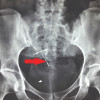
 IJCP Editorial Team
IJCP Editorial Team
Multifetal Gestations - An ACOG Practice Bulletin
Multifetal pregnancies are associated with a considerable increase in the risk of fetal and infant morbidity and mortality. The risk of stillbirth is increased about 5 times and that of neonatal death is increased sevenfold, which could largely be attributed to complications of prematurity. Multifetal gestation is also tied to increased risk of fetal anomalies, gestational diabetes and preeclampsia.
A literature search was conducted to identify relevant publications between January 1990 and October 2013 in order to review the problems and complications linked with twin, triplet, and higher-order multifetal gestations and put forward an evidence-based management strategy. The key recommendations and conclusions from the American College of Obstetricians and Gynecologists are summarized here:
Good, consistent scientific evidence (Level A)
- Prophylactic tocolytic agent use has no role in women with multifetal gestations, including prolonged use of betamimetics.
- Progesterone treatment has no role in decreasing the incidence of spontaneous preterm birth in unselected women with twin or triplet gestations. Its use is not recommended.
- Serial ultrasonographic assessment should be done about every 2 weeks, starting at around 16 weeks of gestation, in monochorionic gestations in order to check for twin-to-twin transfusion syndrome.
Limited/inconsistent scientific evidence (Level B)
- The chorionicity of multifetal gestation has to be determined as early as possible, with the optimal timing being in the first trimester or early second trimester, using ultrasonography.
- Routine use of prophylactic interventions, such as cerclage, hospitalization, bed rest, tocolytics, and pessary, do not seem to reduce neonatal morbidity or mortality. They should not be used merely on the basis of indication of multifetal gestation.
- Antenatal corticosteroids should be given, unless contraindicated, to all patients having a risk of delivery within 7 days, who are at 24-34 weeks of gestation. This should be done regardless of fetal number.
- When birth is expected before 32 weeks of gestation, use of magnesium sulfate appears to reduce the severity and risk of cerebral palsy in surviving infants, irrespective of fetal number.
- Women with a prior low transverse cesarean delivery, otherwise candidates for twin vaginal delivery, may be considered for trial of labor following cesarean delivery.
Based on consensus and expert opinion (Level C)
- All women with multifetal pregnancies should undergo routine screening for fetal chromosomal abnormalities.
- Among women with uncomplicated dichorionic twin pregnancies, clinicians may consider weekly antenatal fetal surveillance at 36 0/7 weeks of gestation.
- Among women with a dichorionic twin pregnancy with maternal or fetal disorders, clinicians should individualize antenatal fetal surveillance. It may be considered at the time of diagnosis or at a gestational age following which delivery would be considered for abnormal testing.
- Delivery can be considered at 32 0/7–34 0/7 weeks of gestation for women with uncomplicated monochorionic–monoamniotic twin gestations.
- Cesarean delivery should be considered for women with monoamniotic twin gestations to avert the chances of an umbilical cord complication of the non-presenting twin during the first twin’s delivery.
- In diamniotic twin pregnancies at 32 0/7 weeks of gestation or beyond with a presenting fetus in vertex position, vaginal delivery should be considered, irrespective of the other twin’s presentation.
- Use of neuraxial analgesia in women with multifetal gestations helps with operative vaginal delivery, external or internal cephalic version and total breech extraction.
Source: American College of Obstetricians and Gynecologists’ Committee on Practice Bulletins—Obstetrics, Society for Maternal-Fetal Medicine. Multifetal Gestations: Twin, Triplet, and Higher-Order Multifetal Pregnancies: ACOG Practice Bulletin, Number 231. Obstet Gynecol. 2021 Jun 1;137(6):e145-e162.

IJCP Editorial Team
Comprising seasoned professionals and experts from the medical field, the IJCP editorial team is dedicated to delivering timely and accurate content and thriving to provide attention-grabbing information for the readers. What sets them apart are their diverse expertise, spanning academia, research, and clinical practice, and their dedication to upholding the highest standards of quality and integrity. With a wealth of experience and a commitment to excellence, the IJCP editorial team strives to provide valuable perspectives, the latest trends, and in-depth analyses across various medical domains, all in a way that keeps you interested and engaged.












Please login to comment on this article